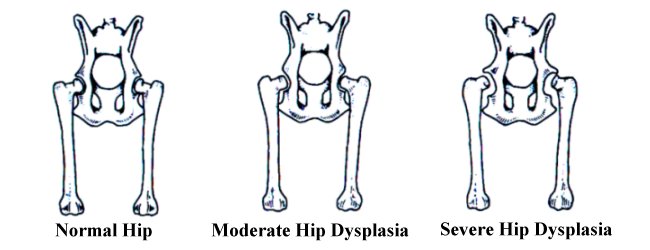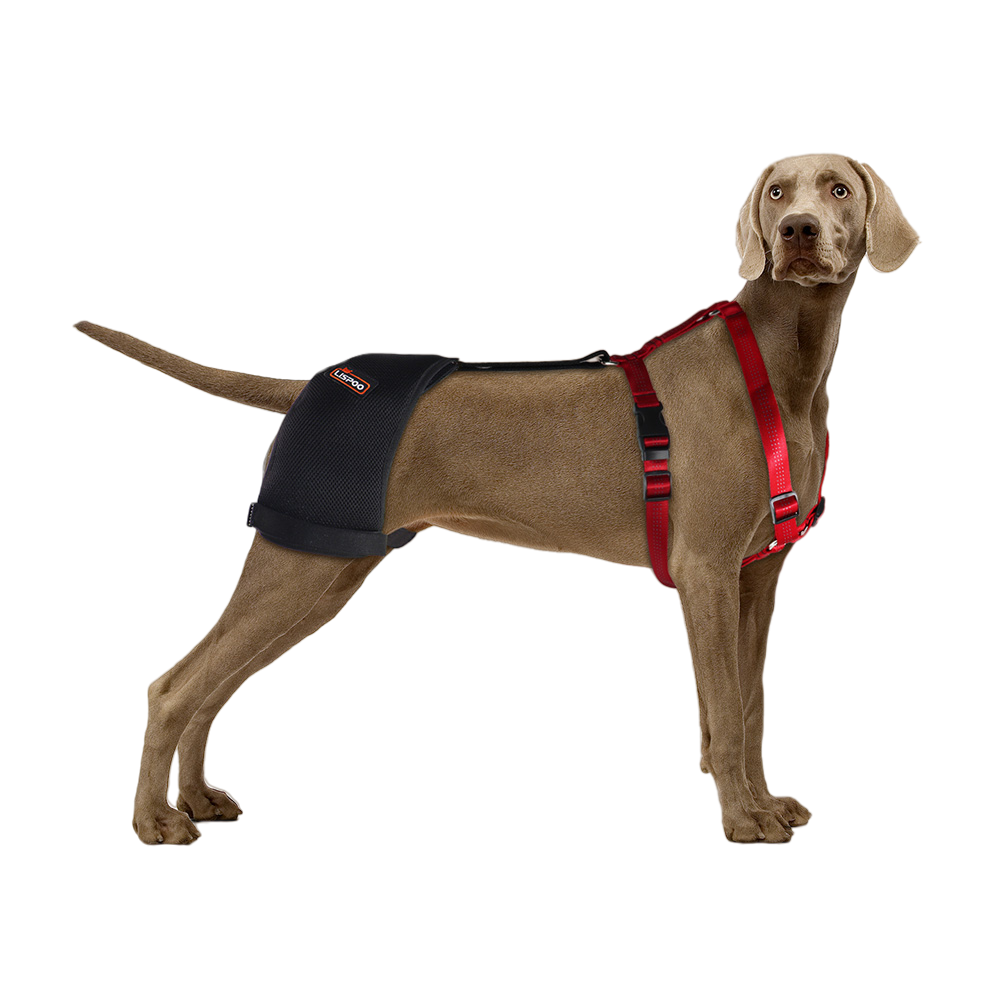If your dog has been diagnosed with hip dysplasia, surgery is the only way to cure your dog of the disease. Some dogs are not good candidates for surgery while other pet parents don’t wish to pursue surgical intervention. While you cannot cure your dog of hip dysplasia without surgery, there are things you can do to help your dog have less pain, better mobility and better quality of life even if they have been diagnosed with hip dysplasia and you don’t pursue surgery. Here are the most important things you need to know:
What is Dog Hip Dysplasia?
The hip joint is a “ball and socket” joint. The ball is the head of the femur. Normally, the head of the femur fits very tightly within the acetabulum. In hip dysplasia, the joint does not fit together snugly, causing instability. As a result, the joint will partially subluxate or move in and out of the socket. This may cause cartilage damage and severe arthritis in dogs as early as one year of age.

Causes of Hip Dysplasia
NUTRITION
Inappropriate nutrition is a major cause of hip dysplasia. It’s a common misconception that large breed puppies should be fed more so they grow faster and larger. Owners might provide excess calories, or supplement their puppy’s diet with additional protein and calcium. But this can cause the bones and muscles to grow at different rates — that leads to numerous orthopedic concerns including hip dysplasia.
OBESITY
Overfeeding leads to excess body weight or obesity in adult dogs, linked with hip dysplasia. Often, these dogs developed hip dysplasia during growth but are unaffected by the condition before becoming overweight or obese. The extra stress and strain put on their hips by their weight makes the situation worse and accelerates painful osteoarthritis or degenerative joint disease.
OVEREXERCISE
Too much exercise early in puppyhood (before three months of age) has been linked to an increased risk of developing hip dysplasia. On the other hand, too little exercise in adulthood has been shown to increase the orthopedic disorder, likely because of obesity and/or the loss of lean muscle mass, which supports and cushions joints.

Treatment for Hip Dysplasia
There are several ways to manage discomfort from hip dysplasia depending on the dog's age, health, and the severity of the disease. Usually, your veterinarian will chose from a combination of different methods to make your dog as comfortable as possible.
- Weight control: The dog's weight should be carefully managed, as even a few extra pounds can add stress onto deteriorated joints, causing greater pain and inflammation. Confirm with your doctor that your dog is on an appropriate diet.
-
Low-impact exercise: Daily exercise is important to your dog. The more you can get your dog out moving around, the more you'll increase synovial cell fluid, which is joint fluid. That will help the joint fluid to circulate and keep the muscles strong. The muscles are the framework that supports the joints so it's so important to help your dog stay strong. Low-impact exercises as directed by your vet can help carefully strengthen the muscles.
- Medication: To help relieve pain, many veterinarians prescribe dog-safe anti-inflammatory drugs. Supplements such as glucosamine or omega fatty acids can also help improve joint health.
- Hip brace: A hip support brace can help some dogs suffering from hip dysplasia symptoms.
Dog Hip Dysplasia Brace could provide gentle compression to the hips and back legs. They accomplish this using either a compressive sleeve or leg panels that provide direct support to the hips and back legs.



0 Comments